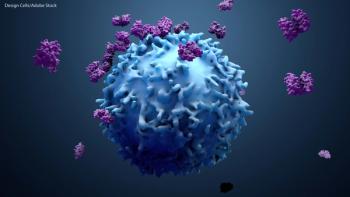
Test Can Predict Post-Op Radiotherapy Outcomes in Prostate Cancer
A new study showed that a 24-gene signature can predict outcomes following postoperative radiotherapy in patients with prostate adenocarcinoma who underwent radical prostatectomy.
A new study showed that a 24-gene signature can predict outcomes following postoperative radiotherapy (RT) in patients with prostate adenocarcinoma who underwent radical prostatectomy. The signature could help determine which patients should receive RT.
“Although radiation after prostatectomy has shown significant clinical benefit, some patients are probably better candidates for radiotherapy than others, and could benefit from improved selection based on individual tumor characteristics,” wrote study authors led by Shuang G. Zhao, MD, of the University of Michigan in Ann Arbor. Gene signatures have been used to create prognostic tools in other malignancies, and the authors created and validated such a signature for this patient population.
The study included a training cohort of 196 patients and a validation cohort of 330 patients; the patients were all included in one of five published US studies, and all had gene expression analysis of their tumor. Patients who had undergone RT were matched with those who had not based on Gleason score, PSA concentration, and other factors. The results were
The researchers developed a 24-gene signature score, called the Post-Operative Radiation Therapy Outcomes Score (PORTOS). In the training cohort, among those with a high PORTOS, those who had RT had a 10-year distant metastasis rate of 5%. Those with a high PORTOS score and no RT had a 10-year rate of 63%, for a hazard ratio (HR) of 0.12 (95% CI, 0.03–0.41; P < .0001).
Among those with a low PORTOS, the opposite was seen. Those who underwent postoperative RT had a 10-year distant metastasis rate of 57%, compared to 31% who did not undergo RT (HR, 2.5 [95% CI, 1.6–4.1]; P < .0001).
The validation cohort confirmed these findings. Those with high PORTOS who underwent RT had only a 4% 10-year rate of metastasis, compared with 35% in those who did not undergo RT, for an HR of 0.15 (95% CI, 0.04–0.60; P = .0020). In this cohort there was no difference in the low PORTOS group: both those who did and did not receive RT had a 10-year rate of metastasis of 32% (HR, 0.92 [95% CI, 0.56–1.51]; P = .76).
“PORTOS is designed to enrich for intrinsic radiation response by only including genes that were related to radiation or DNA damage response on the basis of experimental and literature evidence,” the authors wrote, noting that it is embedded in a commercially available platform, and that further validation of the score in other cohorts is ongoing. “We believe this work will improve the personalization of therapy for patients with prostate cancer.”
Newsletter
Stay up to date on recent advances in the multidisciplinary approach to cancer.


















































































